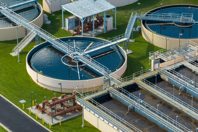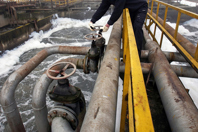LABOR RESOURCES FOR UTILITY MANAGERS
-
As water utilities face unprecedented challenges driven by climate change and the need for adaptive planning, the traditional separation between capital design work and ongoing operational performance is rapidly becoming unsustainable. Thankfully, connected digital tools are breaking down these barriers.
-
While far from prolific, applications of artificial intelligence (AI) in the water and wastewater industry are nothing new. AI and machine learning have been used for data analytics for years. However, for small utilities and those with an aging workforce, these tools seem too high tech and costly to be practical. This doesn’t have to be the case, though. AI tools — particularly generative AI (Gen AI) and large language models (LLMs) — are able to address critical workforce shortages and resource constraints within the water and wastewater industry.
-
With the right help, coping with workforce upheaval, the digital transition, and asset management can be an opportunity.
-
Resilience in water and wastewater facilities means protecting people, infrastructure, and communities through thoughtful design, evolving technology, and a workforce ready for anything. As demand grows and complexity increases, resilience must be baked into every corner of the system from how facilities are built to how they are operated and staffed.
-
The water sector faces a looming workforce crisis due to an aging demographic and increasing retirements, with about one-third of the workforce eligible to retire in the next decade. This article examines how major water utilities are proactively addressing labor challenges and analyzing strategies for cultivating the next generation of water professionals.
-
While contractor qualifications guide early-phase selection in collaborative delivery, cost considerations take priority during guaranteed maximum price development. Navigating this shift requires strategic procurement approaches to uphold project value, strengthen contractor engagement, and reduce risk.
-
Most utilities still rely on job shadowing, thick manuals, and occasional hands-on sessions. That might check a compliance box, but it doesn't build confidence or capability — especially when a real emergency hits. Extended reality (XR) gives utility teams the repetition, realism, and reinforcement they need, in a way that traditional training simply can't.
-
Selecting the right subcontractor can boost efficiency, help cut costs, and result in high-quality outcomes, paving the way for lucrative repeat business opportunities.
-
Whether it's the astronomical energy bills, inadequate flood defence systems putting entire villages underwater, or the record levels of sewage rendering our fresh waterways no-go zones, Britain is now waking up to the harsh realities of outsourcing its utilities to private companies that exist purely to make a profit.
-
Although artificial intelligence (AI) and machine learning (ML) have been under development and talked about for years, the practical implementation of these technologies came fast and furious. Now, with their rapid growth across all industries, many are feeling overwhelmed — especially water workers. This Q&A explores how and why utilities should embrace AI and ML.











